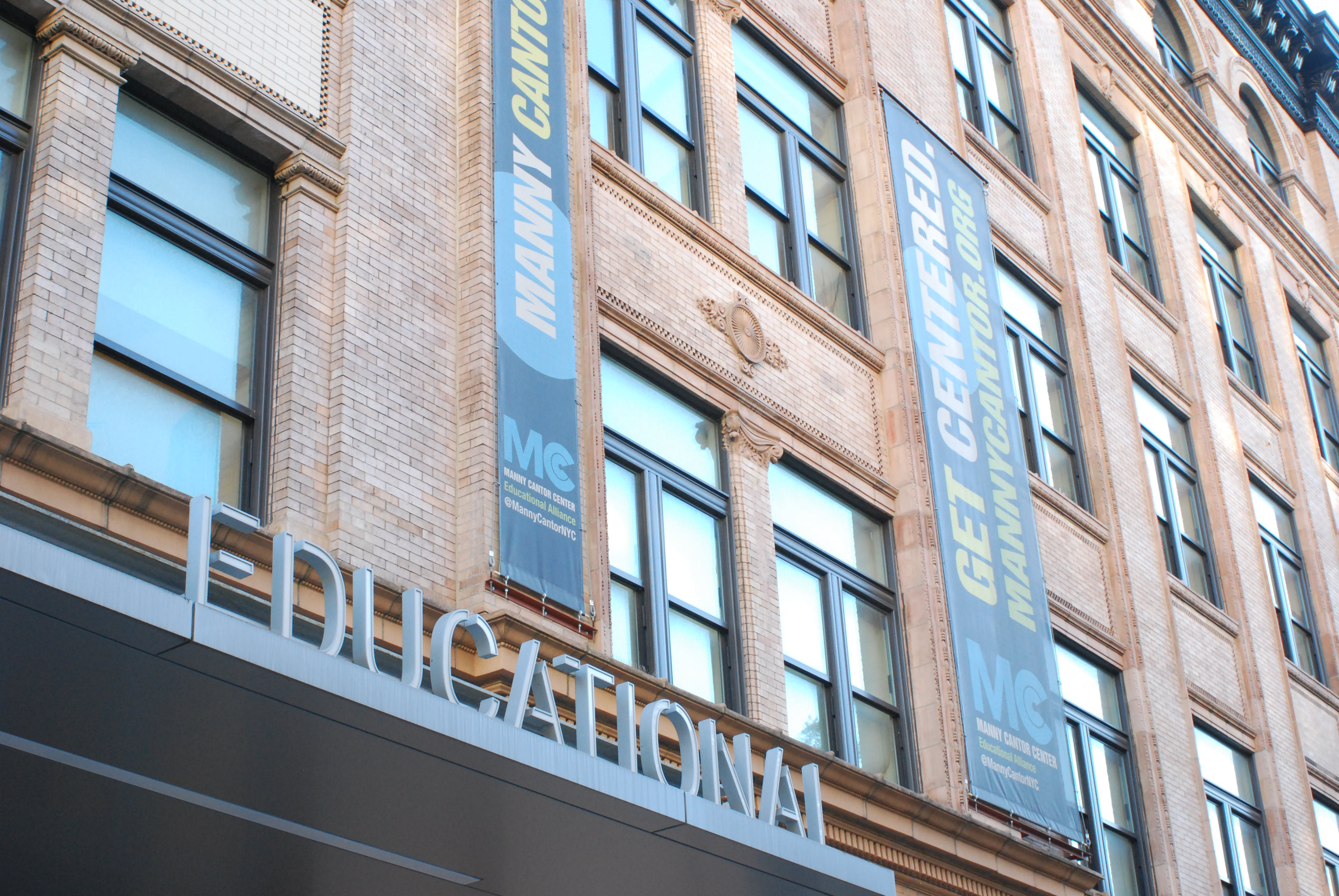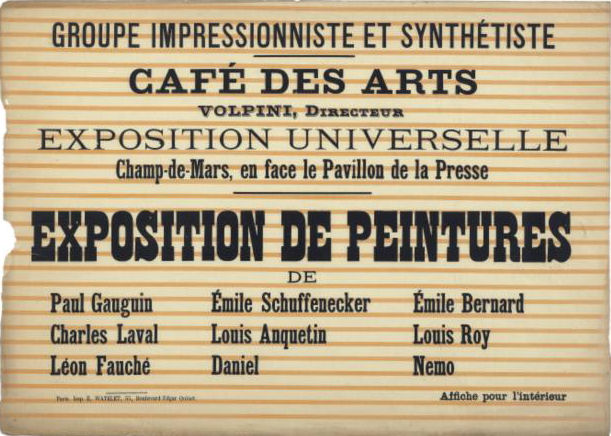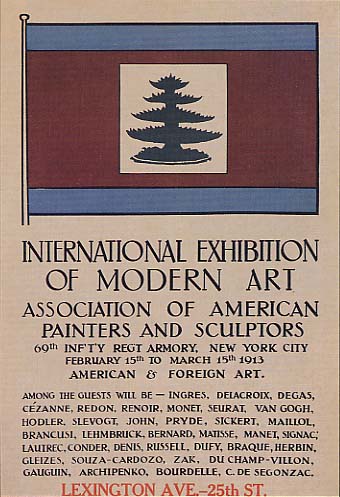|
Henry McBride (art Critic)
Henry McBride (July 25, 1867 – March 31, 1962) was an American art critic known for his support of modern artists, both European and American, in the first half of the twentieth century. As a writer during the 1920s for the newspaper ''The New York Sun'' and the avant-garde magazine ''The Dial,'' McBride became one of the most influential supporters of modern art in his time. He also wrote for '' Creative Art'' (1928-1932) and ''Art News'' (1950-1959). Living to be ninety-five, McBride was born in the era of Winslow Homer and the Hudson River School and lived to see the rise of Jackson Pollock, Mark Rothko, and the New York School. Early life McBride was born in West Chester, Pennsylvania, to Quaker parents. He studied art in New York City at the Artist-Artisan Institute and later took night classes at the Art Students League of New York. He started the art department of The Educational Alliance and directed the Trenton School of Industrial Arts in New Jersey for five years. A ... [...More Info...] [...Related Items...] OR: [Wikipedia] [Google] [Baidu] |
Henry McBride, Art Critic
Henry may refer to: People * Henry (given name) *Henry (surname) * Henry Lau, Canadian singer and musician who performs under the mononym Henry Royalty * Portuguese royalty ** King-Cardinal Henry, King of Portugal ** Henry, Count of Portugal, Henry of Burgundy, Count of Portugal (father of Portugal's first king) ** Prince Henry the Navigator, Infante of Portugal ** Infante Henrique, Duke of Coimbra (born 1949), the sixth in line to Portuguese throne * King of Germany **Henry the Fowler (876–936), first king of Germany * King of Scots (in name, at least) ** Henry Stuart, Lord Darnley (1545/6–1567), consort of Mary, queen of Scots ** Henry Benedict Stuart, the 'Cardinal Duke of York', brother of Bonnie Prince Charlie, who was hailed by Jacobites as Henry IX * Four kings of Castile: **Henry I of Castile **Henry II of Castile **Henry III of Castile **Henry IV of Castile * Five kings of France, spelt ''Henri'' in Modern French since the Renaissance to italianize the name and t ... [...More Info...] [...Related Items...] OR: [Wikipedia] [Google] [Baidu] |
The Educational Alliance
Educational Alliance is a leading social institution that has been serving communities in New York City’s Lower Manhattan since 1889. It provides multi-generational programs and services in education, health and wellness, arts and culture, and civic engagement across 15 sites and a network of five community centers: the 14th Street Y, Center for Recovery and Wellness, Manny Cantor Center, Sirovich Center for Balanced Living, and Educational Alliance Community Schools. History In 1889, the Alliance was founded as a partnership between the Aguilar Free Library, the Young Men's Hebrew Association (now the 92nd Street Y), and the Hebrew Institute. The organization’s main purpose was to serve as a settlement house for Eastern European Jews immigrating to New York City. Jewish philanthropists Isidor Straus, Samuel Greenbaum, Myer S. Isaacs, Jacob H. Schiff, Morris Loeb, and Edwin R. A. Seligman raised $125,000 to buy land and build the organization's five-story flagship buildin ... [...More Info...] [...Related Items...] OR: [Wikipedia] [Google] [Baidu] |
Alfred Stieglitz
Alfred Stieglitz (January 1, 1864 – July 13, 1946) was an American photographer and modern art promoter who was instrumental over his 50-year career in making photography an accepted art form. In addition to his photography, Stieglitz was known for the New York art galleries that he ran in the early part of the 20th century, where he introduced many avant-garde European artists to the U.S. He was married to painter Georgia O'Keeffe. Early life and education Stieglitz was born in Hoboken, New Jersey, the first son of German Jewish immigrants Edward Stieglitz (1833–1909) and Hedwig Ann Werner (1845–1922). His father was a lieutenant in the Union Army and worked as a wool merchant. He had five siblings, Flora (1865–1890), twins Julius (1867–1937) and Leopold (1867–1956), Agnes (1869–1952) and Selma (1871–1957). Alfred Stieglitz, seeing the close relationship of the twins, wished he had a soul mate of his own during his childhood. Stieglitz attended Charli ... [...More Info...] [...Related Items...] OR: [Wikipedia] [Google] [Baidu] |
John Marin
John Marin (December 23, 1870 – October 2, 1953) was an early American modernist artist. He is known for his abstract landscapes and watercolors. Biography Marin was born in Rutherford, New Jersey. His mother died nine days after his birth, and he was raised by two aunts in Weehawken, New Jersey.. He attended the Stevens Institute of Technology for a year, and tried unsuccessfully to become an architect. From 1899 to 1901, Marin attended the Pennsylvania Academy of the Fine Arts in Philadelphia. In Philadelphia he studied with Thomas Pollock Anshutz, Hugh Henry Breckenridge and William Merritt Chase. He also studied at the Art Students League of New York.. In 1905, like many American artists Marin went to Europe, initially to Paris. He exhibited his work in the Salon, where he also got his first exposure to modern art. He traveled through Europe for six years, and painted in the Netherlands, Belgium, England, and Italy. In Europe, he mastered a type of watercolor wher ... [...More Info...] [...Related Items...] OR: [Wikipedia] [Google] [Baidu] |
Charles Demuth
Charles Henry Buckius Demuth (November 8, 1883 – October 23, 1935) was an American painter who specialized in watercolors and turned to oils late in his career, developing a style of painting known as Precisionism. "Search the history of American art," wrote Ken Johnson in ''The New York Times'', "and you will discover few watercolors more beautiful than those of Charles Demuth. Combining exacting botanical observation and loosely Cubist abstraction, his watercolors of flowers, fruit and vegetables have a magical liveliness and an almost shocking sensuousness." Demuth was a lifelong resident of Lancaster, Pennsylvania. The home he shared with his mother is now the Demuth Museum, which showcases his work. He graduated from Franklin & Marshall Academy before studying at Drexel University and at Philadelphia's Pennsylvania Academy of Fine Arts. While he was a student at PAFA, he participated in a show at the Academy, and also met William Carlos Williams at his boarding house. ... [...More Info...] [...Related Items...] OR: [Wikipedia] [Google] [Baidu] |
Precisionism
Precisionism was a modernist art movement that emerged in the United States after World War I. Influenced by Cubism, Purism, and Futurism, Precisionist artists reduced subjects to their essential geometric shapes, eliminated detail, and often used planes of light to create a sense of crisp focus and suggest the sleekness and sheen of machine forms. At the height of its popularity during the 1920s and early 1930s, Precisionism celebrated the new American landscape of skyscrapers, bridges, and factories in a form that has also been called "Cubist-Realism." The term "Precisionism" was first coined in the mid-1920s, possibly by Museum of Modern Art director Alfred H. Barr although according to Amy Dempsey the term "Precisionism" was coined by Charles Sheeler. Painters working in this style were also known as the "Immaculates", which was the more commonly used term at the time. The stiffness of both art-historical labels suggests the difficulties contemporary critics had in attemptin ... [...More Info...] [...Related Items...] OR: [Wikipedia] [Google] [Baidu] |
Fauvism
Fauvism /ˈfoʊvɪzm̩/ is the style of ''les Fauves'' (French language, French for "the wild beasts"), a group of early 20th-century modern artists whose works emphasized painterly qualities and strong colour over the Representation (arts), representational or Realism (visual arts), realistic values retained by Impressionism. While Fauvism as a style began around 1904 and continued beyond 1910, the movement as such lasted only a few years, 1905–1908, and had three exhibitions.John Elderfield, The ''"Wild Beasts" Fauvism and Its Affinities,'' 1976, Museum of Modern Art, p.13, The leaders of the movement were André Derain, Maurice de Vlaminck, and Henri Matisse. Artists and style Besides Matisse and Derain, other artists included Robert Deborne, Albert Marquet, Charles Camoin, Louis Valtat, Jean Puy, Maurice de Vlaminck, Henri Manguin, Raoul Dufy, Othon Friesz, Georges Rouault, Jean Metzinger, Kees van Dongen and Georges Braque (subsequently Picasso's partner in Cubism). Th ... [...More Info...] [...Related Items...] OR: [Wikipedia] [Google] [Baidu] |
Cubism
Cubism is an early-20th-century avant-garde art movement that revolutionized European painting and sculpture, and inspired related movements in music, literature and architecture. In Cubist artwork, objects are analyzed, broken up and reassembled in an abstracted form—instead of depicting objects from a single viewpoint, the artist depicts the subject from a multitude of viewpoints to represent the subject in a greater context. Cubism has been considered the most influential art movement of the 20th century. The term is broadly used in association with a wide variety of art produced in Paris (Montmartre and Montparnasse) or near Paris ( Puteaux) during the 1910s and throughout the 1920s. The movement was pioneered by Pablo Picasso and Georges Braque, and joined by Jean Metzinger, Albert Gleizes, Robert Delaunay, Henri Le Fauconnier, Juan Gris, and Fernand Léger. One primary influence that led to Cubism was the representation of three-dimensional form in the late works o ... [...More Info...] [...Related Items...] OR: [Wikipedia] [Google] [Baidu] |
Post-Impressionism
Post-Impressionism (also spelled Postimpressionism) was a predominantly French art movement that developed roughly between 1886 and 1905, from the last Impressionist exhibition to the birth of Fauvism. Post-Impressionism emerged as a reaction against Impressionists' concern for the naturalistic depiction of light and colour. Its broad emphasis on abstract qualities or symbolic content means Post-Impressionism encompasses Les Nabis, Neo-Impressionism, Symbolism, Cloisonnism, the Pont-Aven School, and Synthetism, along with some later Impressionists' work. The movement's principal artists were Paul Cézanne (known as the father of Post-Impressionism), Paul Gauguin, Vincent van Gogh and Georges Seurat. The term Post-Impressionism was first used by art critic Roger Fry in 1906.Peter Morrin, Judith Zilczer, William C. Agee, ''The Advent of Modernism. Post-Impressionism and North American Art, 1900-1918'', High Museum of Art, 1986 Critic Frank Rutter in a review of the Salon ... [...More Info...] [...Related Items...] OR: [Wikipedia] [Google] [Baidu] |
Vanity Fair (magazine)
''Vanity Fair'' is a monthly magazine of popular culture, fashion, and current affairs published by Condé Nast in the United States. The first version of ''Vanity Fair'' was published from 1913 to 1936. The imprint was revived in 1983 and currently includes five international editions of the magazine. As of 2018, the Editor-in-Chief is Radhika Jones. Vanity Fair is most recognized for its celebrity pictures and the occasional controversy that surrounds its more risqué images. Furthermore, the publication is known for its energetic writing, in-depth reporting, and social commentary. History ''Dress and Vanity Fair'' Condé Montrose Nast began his empire by purchasing the men's fashion magazine ''Dress'' in 1913. He renamed the magazine ''Dress and Vanity Fair'' and published four issues in 1913. It continued to thrive into the 1920s. However, it became a casualty of the Great Depression and declining advertising revenues, although its circulation, at 90,000 copies, was ... [...More Info...] [...Related Items...] OR: [Wikipedia] [Google] [Baidu] |
Armory Show
The 1913 Armory Show, also known as the International Exhibition of Modern Art, was a show organized by the Association of American Painters and Sculptors in 1913. It was the first large exhibition of modern art in America, as well as one of the many exhibitions that have been held in the vast spaces of U.S. National Guard armories. The three-city exhibition started in New York City's 69th Regiment Armory, on Lexington Avenue between 25th and 26th Streets, from February 17 until March 15, 1913. The exhibition went on to the Art Institute of Chicago and then to The Copley Society of Art in Boston,International Exhibition of Modern Art catalogue cover, Copley Society of Boston, |
Abraham Walkowitz
Abraham Walkowitz (March 28, 1878, Tyumen, Russia - January 27, 1965, New York City, EUA) was a Russian-American painter grouped in with early American Modernists working in the Modernist style. While never attaining the same level of fame as his contemporaries, Walkowitz' close relationship with the 291 Gallery and Alfred Stieglitz placed him at the center of the modernist movement. His early abstract cityscapes and collection of over 5,000 drawings of Isadora Duncan also remain significant art historical records. Birth and education Walkowitz was born in Tyumen, Siberia to Jewish parents. He emigrated with his mother to the United States in his early childhood. He studied at the National Academy of Design in New York City and the Académie Julian in Paris under Jean-Paul Laurens. Walkowitz and his contemporaries later gravitated around photographer Alfred Stieglitz's 291 Gallery, originally titled the Little Galleries of the Photo-Secession, where the forerunners of modern ar ... [...More Info...] [...Related Items...] OR: [Wikipedia] [Google] [Baidu] |










